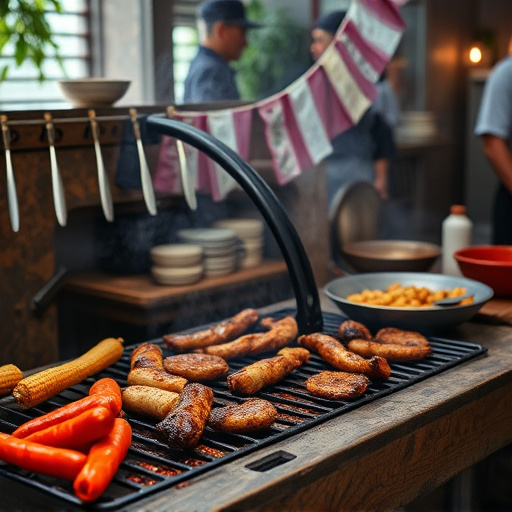Selecting the perfect cut of spare or baby back ribs, at least 1/2 inch thick, is key to a memorable BBQ pork rib recipe. Dry brining with salt for an hour before grilling enhances flavors and tenderness. Choose between classic (ketchup, vinegar, brown sugar) or experimental sauces. Master indirect heat grilling techniques for even cooking and juiciness. Finish with a spicy tomato-based glaze and rest the ribs for 10-15 minutes for optimal texture and flavor.
Impress your guests with mouthwatering backyard BBQ pork ribs! This comprehensive guide takes you on a journey from selecting the perfect cut of ribs to mastering the art of grilling with indirect heat. Learn about dry brining for intense flavor, explore classic and experimental BBQ sauces, and discover the finishing touches that will elevate your rib game. Get ready to become the BBQ master who serves ribs that leave everyone craving more!
- Selecting the Perfect Cut of Pork Ribs
- Dry Brining for Maximum Flavor
- BBQ Sauces: Classic vs. Experimental
- Mastering the Grill: Indirect Heat is Key
- Finishing Touches and Resting Time
Selecting the Perfect Cut of Pork Ribs
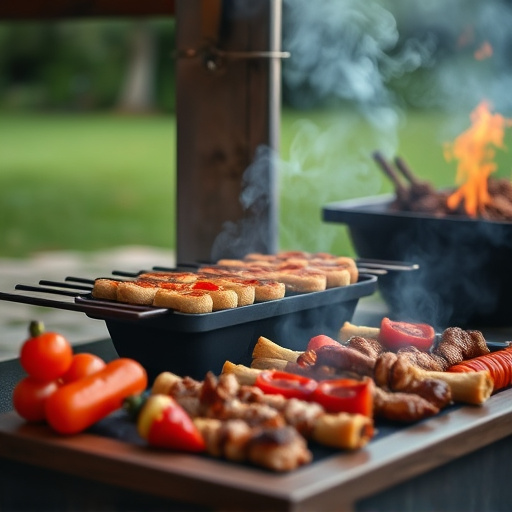
When it comes to impressing your guests with a mouthwatering BBQ pork ribs recipe, choosing the right cut is half the battle won. Opt for spare ribs or baby back ribs; these cuts are tender and highly marbled with fat, ensuring each rib is succulent and juicy after slow-roasting over low heat. The spare rib, with its large meaty sections separated by thin layers of bone, offers a generous serving of meat for every bite. Alternatively, baby back ribs have a slightly tighter arrangement but are still incredibly flavorful. Look for high-quality pork ribs that are at least 1/2 inch thick to guarantee a rich and tender experience.
Choosing the perfect cut ensures your guests savor each rib, basking in the sweet, smoky flavors of a classic BBQ pork ribs recipe. The right choice will make all the difference, turning a simple backyard gathering into an unforgettable culinary event.
Dry Brining for Maximum Flavor
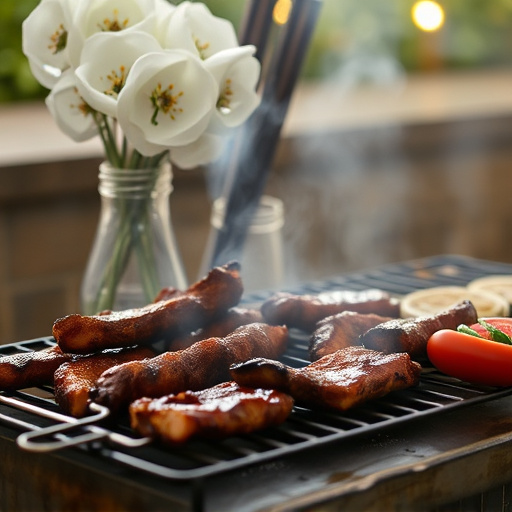
Dry brining is a simple yet effective technique that enhances the flavor of your BBQ pork ribs. Unlike traditional wet brining, which involves soaking the meat in a salt solution, dry brining uses a coarse salt rub to draw out moisture from the meat naturally. This process not only tenderizes the ribs but also deepens their natural flavors. Start by rubbing a generous amount of coarse sea salt or kosher salt all over the rib rack, ensuring every surface is coated. Let the ribs sit at room temperature for an hour to allow the salt to work its magic. Then, fire up your grill and get ready for an unforgettable BBQ pork rib experience!
This method is particularly ideal for showcasing the quality of your ingredients. The dry brining process simplifies the overall cooking method, allowing the smoke and heat from your grill to penetrate and infuse the ribs with a rich, savory taste. Whether you’re a BBQ connoisseur or hosting a backyard gathering, incorporating this technique into your BBQ pork rib recipe will leave your guests impressed and craving more.
BBQ Sauces: Classic vs. Experimental
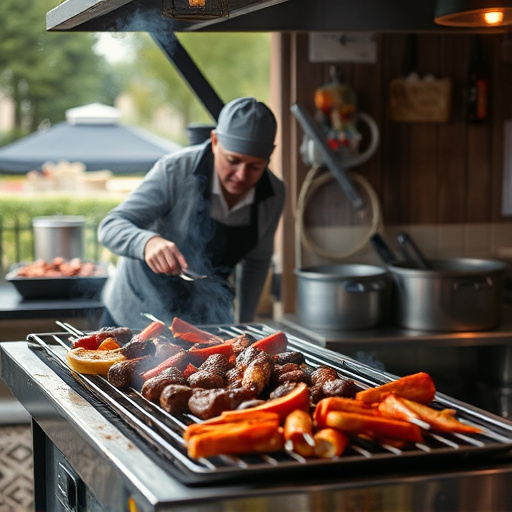
When it comes to BBQ sauces for pork ribs, there are two main camps: classic and experimental. The classic option is a time-tested blend of ingredients like ketchup, vinegar, brown sugar, and spices. This traditional sauce offers a balanced sweetness and tanginess that complements smoky, tender ribs perfectly. It’s a safe bet for those who prefer familiar flavors and knows what to expect from each bite.
On the other hand, experimental sauces break free from tradition, blending unconventional ingredients like chili pepper, maple syrup, or even fruit purees. These modern takes on BBQ sauce can offer surprising flavor profiles, adding complexity and depth to your BBQ pork rib recipe. While they might not appeal to everyone’s taste, they can be a real game-changer for those looking to impress their guests with something unique and memorable.
Mastering the Grill: Indirect Heat is Key
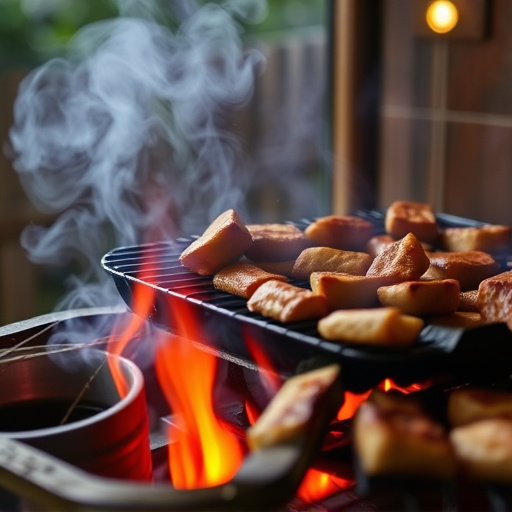
Mastering the art of grilling BBQ pork ribs requires understanding the power of indirect heat. This technique is key to achieving that perfect, slow-cooked, fall-off-the-bone texture that impresses guests. Instead of direct, high-heat cooking which can burn the exterior before the interior is tender, indirect heat allows for a gentle, steady cook. It ensures the ribs cook evenly, locking in juices and flavors from the BBQ sauce.
By using a charcoal or gas grill set up for indirect heating—with coals on one side and ribs placed away from direct flame on the other—you create an environment where smoke and heat work together to tenderize the meat. This method takes longer, but it’s worth it for those mouthwatering, succulent pork ribs that will leave your guests craving more.
Finishing Touches and Resting Time

The final steps in crafting the perfect BBQ pork ribs involve adding those special finishing touches that elevate your dish from good to exceptional. After slow-cooking the ribs, brush on a generous layer of BBQ sauce—a combination of tomato-based sauce and your favorite spices—for a sweet and savory glaze. This not only enhances the flavor but also adds a captivating appearance to your ribs. Let the sauce caramelize slightly at the end of cooking for an extra crispy, delicious crust.
Resting is a crucial step in any BBQ pork rib recipe. Allow the ribs to sit for about 10-15 minutes after removing them from the heat source. This resting period allows the juices to redistribute throughout the meat, ensuring each bite is tender and juicy. During this time, the internal temperature of the ribs will continue to rise slightly, completing the cooking process while preventing overcooking.
